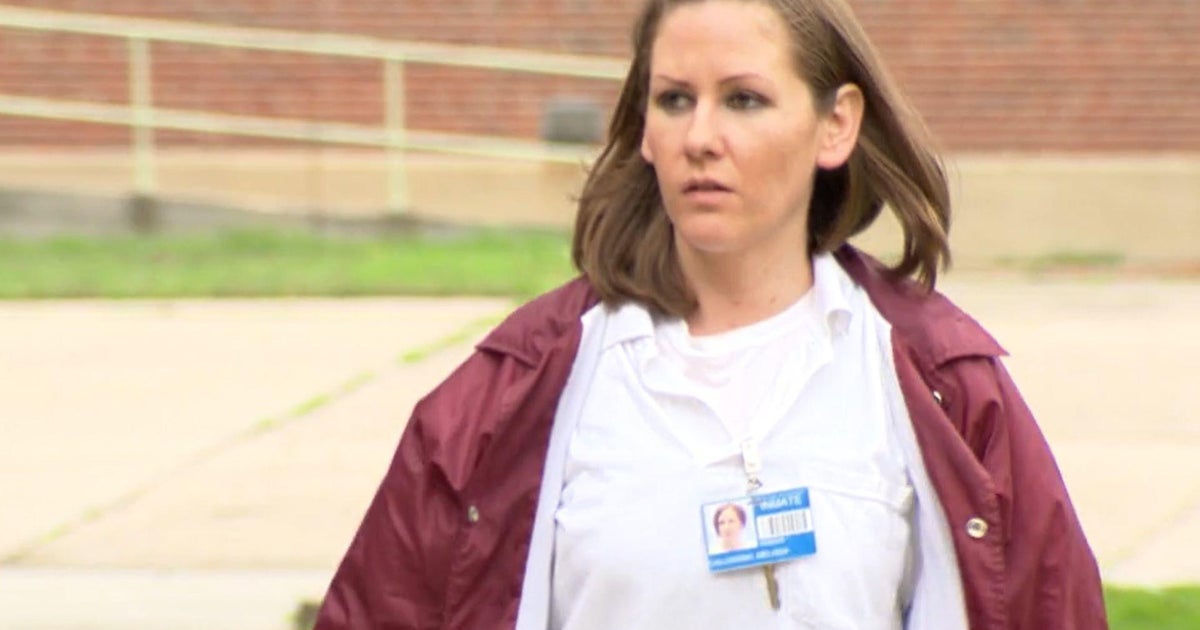Illinois
Catholic clergy in Illinois sexually abused more than 1,900 minors, state attorney general says in report

An investigation has substantiated child abuse claims against Catholic clergy in Illinois by more than 1,900 victims, state Attorney General Kwame Raoul said in a news conference detailing the findings of the office’s five-year investigation that uncovered hundreds more cases than first reported by the dioceses in 2018.
More than 100,000 pages of diocesan documents and 600 confidential contacts with survivors of child sex abuse helped the state’s office piece together the 696-page report released Tuesday on clergy sexual abuse in all six Catholic dioceses in Illinois, the office said.
“It is my hope that this nearly 700-page report will provide some closure to survivors of child sex abuse by Catholic clerics by shining a light both on those who violated their positions of power and trust, and on the individuals in church leadership who covered up that abuse,” Raoul said in a statement.
Raoul’s predecessor, former Illinois Attorney General Lisa Madigan, began investigating the scope of state clergy sexual abuse in 2018 after a Pennsylvania grand jury report documented the abuse of 1,000 minors in six dioceses in that state, the office said. The revelations in that report shocked dioceses around the country and numerous state attorneys general pledged to investigate clergy within their own states – Illinois included.
At that time, the Catholic dioceses of Illinois publicly listed only 103 substantiated child sex abusers, the office said.
The investigation covered all six Illinois dioceses — Chicago, Belleville, Joliet, Peoria, Rockford and Springfield — which serve the state’s 3.5 million Catholics. Investigators substantiated child sex abuse allegations against 451 clerics and religious brothers. The largest number was in Chicago, where there were 150 reported abusers, and Joliet, with 52 reported abusers, the report found. Since some reported abusers were registered in two dioceses, there were a total of 494 substantiated abusers reported, the report said.
The report discloses the names of 451 substantiated child sex abusers and provided narratives and details on the abuse they committed while serving the Church. Some had a single victim, while others had dozens. One who died in 2015 abused 36 children while serving in the Diocese of Davenport, Iowa, and in Joliet; before retiring in 2005, another abused two children in the Diocese of Peoria. Yet another priest raped a 10-year-old girl in his classroom, the report said.
The depth and breadth of the sexual abuse varied – as did the punishments they received, the report states. In many instances, allegations were reported and not acted upon, the report found. In 1993, two survivors accused one priest at the Chicago Diocese of abuse, but the review board did not recommend that the priest be punished, the report said. Instead, the clergy had him monitored and he was still allowed to meet with teenage girls, the report found. The abuse continued and at least three more survivors reported abuse at the hands of the priest until in 2002 – almost a decade later – he was removed from the clergy, the report said.
One priest accused of abusing numerous young boys was known by the parish children as “Happy Hands,” the report said, but he evaded punishment for years. Prosecutors often declined to move the case forward — an assistant state’s attorney told Our Lady of the Snows parishioners, “It was our decision not to put the children through any court process, because we feel that our goal can be achieved without doing that,” the report said. The priest moved from parish to parish after accusations against him started in 1990 but he didn’t leave the Catholic church until 2008, the report said. He was never punished for his alleged abuses, the report said, and instead, he resides at “his cottage—the same residence where he had been accused so many times of abusing young boys.”
At least 1,997 survivors reported being abused by Illinois clergy, the report said. Sexual abuse survivors shared their narratives – which were essential to the report’s investigation said the Illinois Attorney General – and many spoke frankly about the struggles they’ve faced since their abuse.
Nearly every survivor struggled with mental health issues, the report found, with some turning to alcohol, addiction and others having anxiety, and feelings of unworthiness. One survivor called “Jeffrey” fell into “a deep depression because he felt he could not tell anyone about what had been done to him,” the report read, and worked on his mental health for 30 years. Some survivors struggled with suicidal thoughts, while others dealt with physical health and financial issues.
One survivor, Terry Neary, believes that the public naming of sexual abusers is a “game changer” for child sexual abuse survivors. Neary, who was abused by a priest, told investigators that a “public listing is an announcement by the church to survivors that ‘we believe you.’”
Requests for comment from the Catholic Conference of Illinois and the United States Conference of Catholic Bishops were not returned immediately.
Mike McDonnell, a spokesperson for SNAP, a survivor network supporting victims of institutional sexual abuse, told CBS News, “This report clearly tells us that no one knew more about abuse, and no one did less about it, than these dioceses themselves.”
In their view, “the bishops lied,” said Larry Antonsen, who leads the network’s Chicago chapter, and “these numbers are at once staggering and, unfortunately, likely an undercount.”
The organization said the same level of criminal behavior by clerics and cover-up by Church officials can be found nationwide and they hope “more attorneys general and local prosecutors across the country will have the guts to dig deeper and investigate Catholic dioceses and institutions in their locale.”
If you are a survivor of childhood sexual abuse, RAINN offers free, anonymous help 24-7 through the National Sexual Assault Hotline, 800-656-HOPE and online.rainn.org. Information on mental health care resources and support is available via The National Alliance on Mental Illness HelpLine, 1-800-950-NAMI (6264), Monday through Friday, 10 a.m. to 6 p.m. ET, or by emailing the organization at info@nami.org.

Illinois
Illinois Coach Brad Underwood Won’t Blame Refs for Michigan State Loss

For all the scowls, snarls and shouts coming from the Illinois sideline Sunday at the Breslin Center in East Lansing, Michigan, Illini coach Brad Underwood was, by comparison, a picture of zen-like contentment by the time he hit the postgame presser following his club’s 80-78 loss to Michigan State.
“Anybody in here expected anything different?” Underwood said with a weary smile to open his remarks. “A good college basketball game.”
Many Illini fans thought not. Social media was bustling in the aftermath with hot takes howling over the foul calls against Illinois and memes clowning the game officials. Illini guard Kasparas Jakucionis fouled out after just nine minutes of game action, and a critical technical foul was issued by referee Jeffrey Anderson on the Illinois bench in the late stages as the Illini were gamely clawing back into the game with Jakucionis on the sideline.
But when given the opportunity in his media session, Underwood – though disappointed – wouldn’t pile on.
“They teed our bench. Their guy was up, but our guys got the T,” Underwood said. “So I didn’t get the T – it was considered on our bench. Unfortunate. Two-point game. But Jeff’s a great official. He’s one of the best in the country.”
As for the whistles on Jakucionis, Underwood gave the officials further grace – mostly.
Kasparas Jakucionis fouled out with just three points on the day. pic.twitter.com/C39xjMWU5G
— CBS Sports College Basketball 🏀 (@CBSSportsCBB) January 19, 2025
“I’m not gonna go there without … especially ’til I watch the film,” he said. “But the fourth one was awful. I’ll say that he got shoved in the back and pushed into a guy. And I mean, that one was just gross. Gross. I mean, how?”
If Underwood seemed oddly content as he offered his postgame thoughts, it’s likely because he could be observed extrapolating in real time what his Illini squad will be capable of when fully galvanized and facing something even slightly more favorable than Sunday’s dire game circumstances (including center Tomislav Ivisic playing through a nasty case of strep throat).
“I thought we handled a lot of tough situations today pretty well,” he said. “Best player in the game played [nine] minutes. You saw just a little bit of what he could do when he was in – just controlled the whole game with pick-and-rolls and passes. And, unfortunately, today he didn’t get a play.”
Michigan State Outlasts Illinois Basketball in Big Ten Slugfest
Michigan State’s Tom Izzo Compares Illinois Basketball to ‘Celtics or Lakers’
Illinois Basketball Makes Significant Moves in NET, KenPom Rankings
Illinois
WATCH: Michigan State Coach Tom Izzo Speaks After Win Over Illinois

EAST LANSING, Mich. — No. 12 Michigan State got the test that many were waiting for when it hosted No. 19 Illinois on Sunday afternoon.
The Spartans passed the test, defeating the Fighting Illini 80-78 with an admirable second-half effort.
Michigan State coach Tom Izzo, who had been quite critical of his team after its win over Penn State on Wednesday, was in much better spirits in his postgame press conference on Sunday.
You can watch below:
Below is a partial transcript from Izzo’s opening statement of his presser:
Izzo: “Wow, just another day in paradise, I guess. But I hope our fans appreciated one of the better games. I mean, it was a crazy game, and I know we were both complaining about calls and this and that, but I thought two teams really competed. I said this before the game, and now I’ll say it after the game: I really do believe they’re the best team in the league right now. I’m not slighting us,I’m not sliding Purdue, I’m not slighting Michigan or anyone else. I just think, right now, that was a tough teamto play. And we did make some mistakes early that really bothered us, because they were scouting report mistakes. And then we missed some free throws early, and they made some shots. I mean, the kid, [Will] Riley, has not been playing well lately, and he had 16 and a halftime. He was unbelievable. And you have Kasparas [Jakucionis], got in foul trouble, that helped us, I mean, there’s no question about it. I love the kid [Dra] Gibbs-Lawhorn, tough. I mean, they play hard – [Morez] Johnson – they play hard, but we did a hell of a job on [Ben] Humrichous. … Had a lot of good players. I thought we did a decent job on [Kylan] Boswell. We didn’t take many 3s, it was because of the way they guarded. We thought we could go inside, we did. We weren’t very good in rebounding in the first 10 minutes of the game. They scored 26 points. Second 10, they scored 10 points, and we ended up losing the rebound battle by 1. But that team is really good; we’re both 1, 2 in the league in rebounding.”
Don’t forget to follow the official Spartan Nation Page on Facebook Spartan Nation WHEN YOU CLICK RIGHT HERE, and be a part of our vibrant community group Go Green Go White as well WHEN YOU CLICK RIGHT HERE.
Illinois
3 Keys to an MSU Win Against Illinois

The No. 12 Michigan State Spartans (15-2, 6-0) will be featured in a pivotal top 25 Big Ten matchup as they host the No. 19 Illinois Fighting Illini (13-4, 4-2) at the Breslin Center on Sunday afternoon. For the Spartans to win their 11th-straight, they will need to accomplish these three keys.
Limit Illini Freshman Guard Kasparas Jakucionis
The Illini possess one of the top players in the country and projected first-round pick in next year’s NBA Draft. Freshman guard Kasparas Jakucionis is the real deal, leading the team in both points per game (16.7) and assists (5.4). He will be the one to cause issues against a strong Spartans defense.
Prior to joining Illinois, Jakucionis was the youngest person ever to play for the European powerhouse, Barcelona, of the ACB or Spanish Basketball Clubs Association. He holds strong experience overseas at the pro level and has the potential to be a star in the Big Ten and NBA.
It will be nearly impossible to silence the Illini’s best player, but slowing him down could be a factor in the game, especially with the lingering injury he may still have.
Jakucionis suffered a left forearm injury in the first week of January against Washington, missed the next two games, and quickly responded well with 21 points in their most recent game against Indiana. It will be telling in the first several minutes what his health status will be for the contest.
Spartans Three or More Scorers in Double Figures
The Spartans have thrived all season long in terms of scoring distribution and having multiple guys step up when they are needed. During their 10-game win streak, Michigan State has had three or more double-digit scorers in nine of those contests. They must find a way to get everyone involved.
The usual suspects have been senior guard Jaden Akins (14.2 ppg) and freshman guard Jase Richardson (9.6 ppg). It will be up to them to get the scoring started early and quickly work the rest of the roster into the scoring rotation, being effective all over the floor.
Keep Illini Under 80 Total Points
The biggest strength for this Illini team is its potent offensive attack. It is the No. 2 team in the conference in terms of average points per game at 87.3 and is the top team in the conference in point differential at +20. If the Spartans’ defense shows up, they will have a great chance to earn a win.
The magic number is 80 points for the Spartan defense. The Illini are 1-3 this season when scoring less than 80 points, the lone win coming against Oakland in a 66-54 final. They are an up-tempo group that must score big to win games.
With a Spartan offense that averages just over 81 points per game, they will need to hit their average while forcing a serviceable number of turnovers and keeping them off the board as much as. possible. Not to mention, the Illini are 14th in the Big Ten in field goal percentage (45%).
Don’t forget to follow the official Spartan Nation Page on Facebook Spartan Nation WHEN YOU CLICK RIGHT HERE, and be a part of our vibrant community group Go Green Go White as well WHEN YOU CLICK RIGHT HERE.
-

 Science1 week ago
Science1 week agoMetro will offer free rides in L.A. through Sunday due to fires
-
/cdn.vox-cdn.com/uploads/chorus_asset/file/23935558/acastro_STK103__01.jpg)
/cdn.vox-cdn.com/uploads/chorus_asset/file/23935558/acastro_STK103__01.jpg) Technology1 week ago
Technology1 week agoAmazon Prime will shut down its clothing try-on program
-
/cdn.vox-cdn.com/uploads/chorus_asset/file/25826211/lorealcellbioprint.jpg)
/cdn.vox-cdn.com/uploads/chorus_asset/file/25826211/lorealcellbioprint.jpg) Technology1 week ago
Technology1 week agoL’Oréal’s new skincare gadget told me I should try retinol
-
/cdn.vox-cdn.com/uploads/chorus_asset/file/25832751/2192581677.jpg)
/cdn.vox-cdn.com/uploads/chorus_asset/file/25832751/2192581677.jpg) Technology4 days ago
Technology4 days agoSuper Bowl LIX will stream for free on Tubi
-

 Business6 days ago
Business6 days agoWhy TikTok Users Are Downloading ‘Red Note,’ the Chinese App
-
/cdn.vox-cdn.com/uploads/chorus_asset/file/25835602/Switch_DonkeyKongCountryReturnsHD_scrn_19.png)
/cdn.vox-cdn.com/uploads/chorus_asset/file/25835602/Switch_DonkeyKongCountryReturnsHD_scrn_19.png) Technology2 days ago
Technology2 days agoNintendo omits original Donkey Kong Country Returns team from the remaster’s credits
-

 Politics1 week ago
Politics1 week agoTrump to be sentenced in New York criminal trial
-

 Culture2 days ago
Culture2 days agoAmerican men can’t win Olympic cross-country skiing medals — or can they?




















